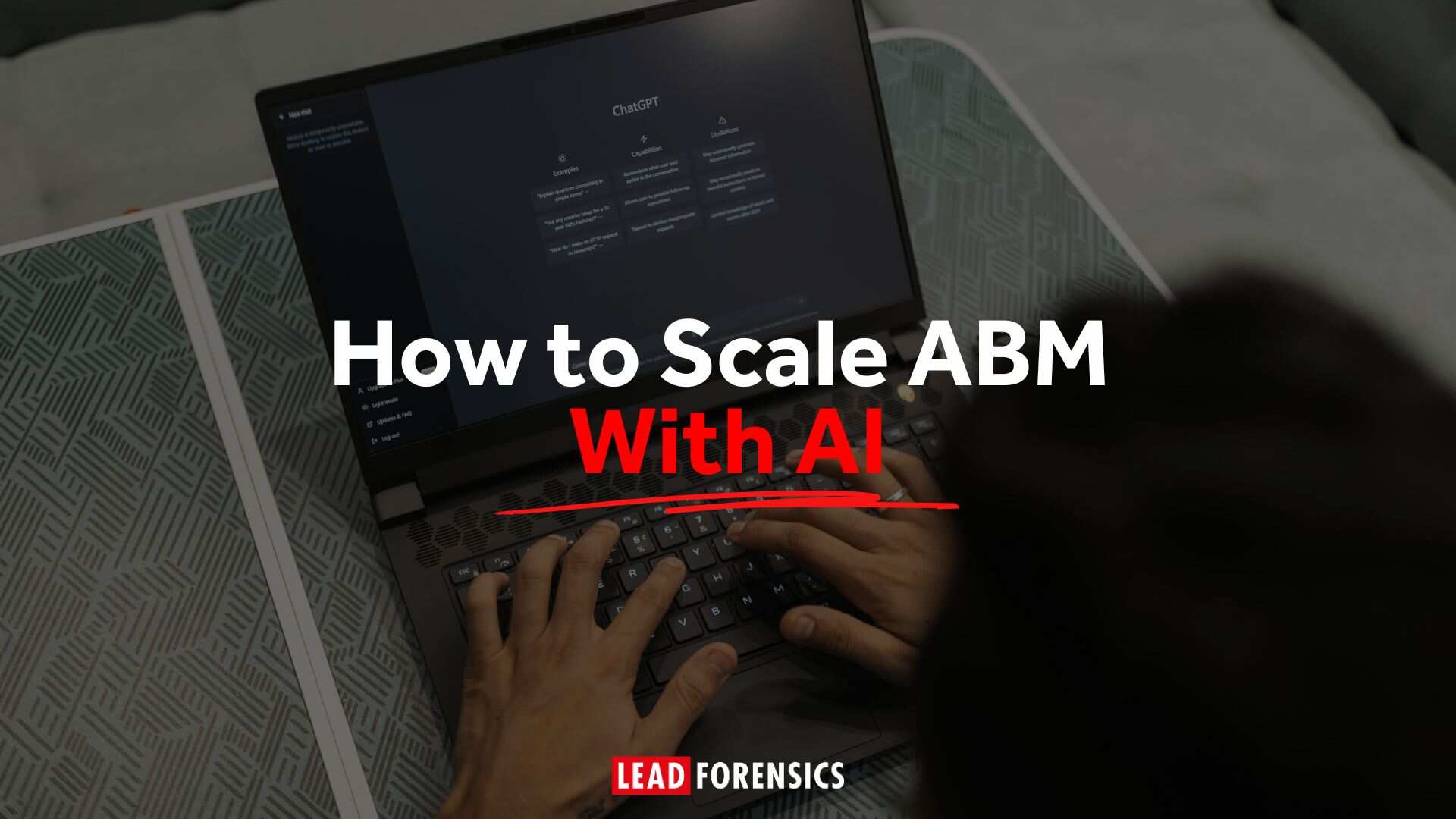There are so many challenges facing outbound Sales Development Reps today, not least the fact that only five to seven percent of your prospects will be on their buying journey at any given time.
But how do you transform your outbound SDR team to push them to the next level?
It’s a topic that was discussed in a webinar, when Georgia Kirwan, Head of Sales Development at Engage Tech, Chris Deutch, Head of Delivery at Engage Tech, and Amy Cook, Global Development Director at Lead Forensics shared how they did just that.
Tip: Recognize the New SDR Reality
SDRs now face a unique combination of market and operational challenges: fewer prospects ready to buy, gatekeepers that are harder to bypass, complex sales objections, and reduced in-person collaboration in distributed teams.
Leaders must ensure their SDRs have not only the skills, but also the data and environment to succeed.
As Georgia explained: “Catching people at the right time is bloody tough. We’ve got to arm SDRs with the best data and objection-handling tools if we want them to hit their targets.”
The key is preparing your team for the reality that most of their outreach will be to prospects who aren’t ready to buy right now, and building persistence and value into every touchpoint.
Tip: Use Technology as a Performance Multiplier
Automation and intelligence tools can liberate SDRs from repetitive, non-revenue-generating work and take their efficiency to the next level.
For example, cadencing platforms, high-quality contact data, and call analytics can all keep SDRs focused on meaningful conversations rather than admin.
Chris summed it up: “Removing the manual aspect of sourcing the right contact and number is going to absolutely change the game for SDRs.”
When you harness the power of AI for sales, you can add another layer by surfacing insights from calls, flagging conversation patterns, or automatically routing useful information to the right person. The win comes from using these tools to enhance, not replace, the human touch in selling.
Tip: Measure What Really Matters
Activity is not the same as productivity. The panel emphasised the importance of tracking the quality of SDR output, not just the quantity. That means moving beyond “calls made” to understand conversion, value, and follow-through.
Amy recommended focusing on three questions:
- Are you getting people on the phone?
- Are you closing them down and securing a meeting?
- Are they actually showing up?
Amy’s benchmark is clear: “Out of every three conversations with decision makers, I’d expect you to close at least one.”
Monitoring show rates and reviewing calls where prospects didn’t attend can help uncover whether messaging truly created value.
Tip: Coach with Precision, Not Generalities
Effective coaching is targeted, data-driven, and collaborative. The panel’s top methods included peer-to-peer mentoring, focused call review segments, and scenario pausing to encourage better on-the-spot thinking.
Georgia described one practical exercise: “We pause a call just before the SDR asks their next question and say, ‘What’s the best thing to ask right now?’ It gets them thinking about how to dig deeper into the prospect’s challenges.”
As a sales leader, you should join your next 1:1 meeting fully prepared with data and call examples to show reps that their development is a genuine priority.
Tip: Break Down Sales and Marketing Silos
When sales and marketing share insights and collaborate, campaigns are sharper, and conversion rates improve. Sales can inform marketing of the real-world objections they hear daily, while marketing can provide sales with the content and messages that are gaining traction.
Georgia put it simply: “When sales and marketing are best buds in this process, that’s when the harmony – and the fabulousness – happens.”
Without aligning sales and marketing teams, opportunities and insights slip through the cracks.
Tip: Attract and Retain Top Talent
Winning in outbound sales starts with bringing the right people into the team, and keeping them there. The panel’s advice included offering clear career paths, structured onboarding, and buddy systems to build confidence.
Chris highlighted the need to challenge top performers: “Although they may be the top performing SDR now, as soon as they move to the next role they start again. You have to keep stretching them.”
Retention also depends on transparency.
Amy added: “If you give people a clear goal and show them how to get there, they’ll want to stay and grow with you.”
Get more advice on how to develop – and retain – a high-performing sales team.
Tip: Test Tools to See What Really Works
The right sales enablement tools can transform the performance of your SDRs, but they need to be tested.
“You don’t say, ‘right, let’s trial this and give it to everyone and see how they perform’,” explained Amy . “It’s about taking a small group of people that have been there for different amounts of time and with slightly different approaches and then reviewing the impact [of the changes] against others in the team that didn’t have the tool.”
If the tests suggest the tool is having a positive impact, you can introduce it slowly across the team and monitor its impact.
Other things you could test include:
- LinkedIn messages. Does a rephrasing of your current message get read by more people?
- Opening greetings. Does a different first line make prospects stay on the call?
- Niche targeting. Do prospects from some industries or geographies respond better to cold calls?
Tip: Use AI Wisely
AI offers significant efficiency gains, from speeding up research to summarising call insights, but it’s important that you guard against risks like data inaccuracy or the loss of personalization.
Amy’s perspective was pragmatic: “AI can very quickly help you understand a vast amount of data, but there are certain elements that should be left to the person having that conversation.”
When you do use AI, make sure you start small, focus on support tasks, and keep relationship-building firmly in human hands.
Bonus Tips
The webinar closed with each panellist’s single most important takeaway for SDR leaders:
- Chris: “Create a common purpose and mutual accountability between SDRs. That’s what keeps people engaged and performing.”
- Georgia: “Always think about your present self and your future self: build the pipeline today that you’ll thank yourself for tomorrow.”
- Amy: “A successful team is built on successful individuals. Give 100% for yourself and for your peers, and the team will win together.”
Empower Your SDRs With Better Data
Website visitor identification software can be a powerful lever for transforming an SDR team because it addresses three of the biggest barriers SDRs face: knowing who to contact, when to contact them, and what to say.
Lead Forensics identifies the companies visiting your website, even if they don’t fill out a form. This turns anonymous traffic into a warm list of accounts showing active interest, so SDRs spend less time chasing cold prospects and more time focusing on those already demonstrating intent.
And because the software offers rapid alerts, SDRs can reach out while your brand is fresh in the prospect’s mind. That’s a huge advantage in markets where only 5–7% of prospects are in buying mode at any given time.
Plus, page view history and browsing patterns give SDRs insight into what’s capturing the prospect’s attention, whether it’s a specific product page, pricing information, or a case study. This allows for personalised, relevant outreach that’s more likely to convert into a booked meeting.









